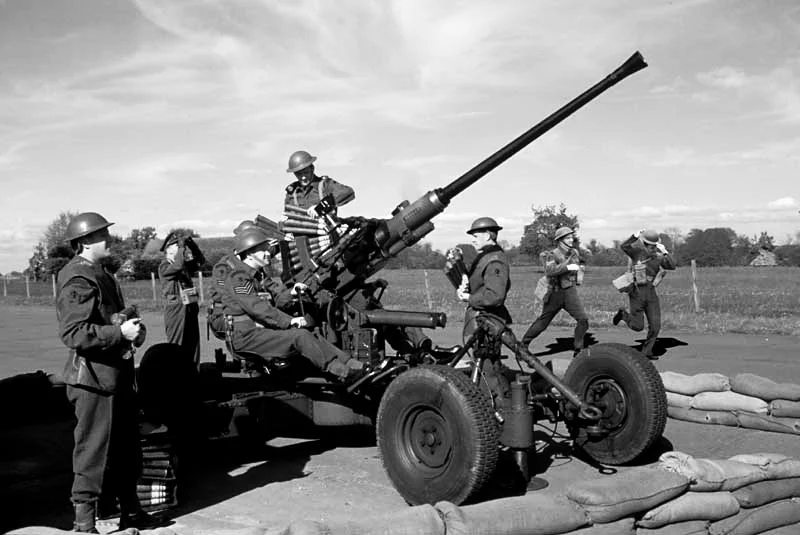The Bofors 40mm anti-aircraft gun, developed by the Swedish arms manufacturer Bofors, is one of the most iconic and widely used artillery pieces of its kind in modern military history. Known for its effectiveness, reliability, and adaptability, the Bofors 40mm played a crucial role in both World War II and subsequent conflicts, becoming synonymous with air defense.
Development and Design
The development of the Bofors 40mm gun began in the late 1920s, spurred by the need for a versatile anti-aircraft weapon capable of engaging fast-moving aerial targets. The gun was designed by Swedish engineer Carl Gustaf von Zweigbergk and initially entered service in the late 1930s. It quickly gained a reputation for its effectiveness and reliability.
Key Design Features:
- Caliber and Ammunition: The Bofors 40mm gun fired a 40x311mmR caliber shell, which was effective against aircraft at various altitudes and distances. The gun could fire both high-explosive shells for air targets and fragmentation rounds for anti-personnel and anti-materiel roles.
- Rate of Fire: The Bofors gun had a remarkable rate of fire, capable of firing up to 120 rounds per minute, which made it highly effective in engaging multiple targets quickly.
- Range and Accuracy: It had a maximum effective range of approximately 12,000 meters (about 7.5 miles) and was equipped with advanced sighting and fire control systems for accurate targeting.
The Bofors 40mm gun saw extensive service during World War II and continued to be used by many armed forces well into the Cold War era and beyond. Its operational history highlights its versatility and effectiveness in various roles:
World War II:

- Allied Forces: The Bofors gun became a staple in Allied anti-aircraft defenses, employed on ships, naval vessels, and ground-based installations to protect against enemy air attacks. It was particularly effective against both Axis aircraft and dive bombers.
- Naval Use: Bofors guns were mounted on numerous Allied warships, including cruisers, destroyers, and battleships. Their rapid rate of fire and accuracy made them highly effective against aerial threats encountered at sea.

Operational History
Post-World War II:
- Cold War and Beyond: The Bofors 40mm gun continued to be used by many nations during the Cold War period and beyond. It was adapted for use in ground-based air defense systems, including mobile platforms and fixed installations.
- Adaptability: The gun’s adaptability allowed it to be integrated into various military vehicles and platforms, serving as a versatile anti-aircraft and anti-surface weapon.
Variants and Legacy
Over its service life, the Bofors 40mm gun underwent several upgrades and variants to improve its performance and adapt to evolving threats and technologies. Variants included enhancements in fire control systems, ammunition types, and mobility for ground-based applications.
Legacy:
- Iconic Status: The Bofors 40mm gun remains one of the most iconic and recognizable anti-aircraft weapons in military history, celebrated for its effectiveness and reliability.
- Influence: Its design and success influenced subsequent generations of anti-aircraft guns and air defense systems, setting a benchmark for performance and operational capability.
- Continued Use: Some variants of the Bofors 40mm gun are still in use today, albeit in fewer numbers, with many being preserved in museums and by military history enthusiasts.
Conclusion
The Bofors 40mm anti-aircraft gun stands as a testament to Swedish engineering and its pivotal role in defending against aerial threats during World War II and beyond. Renowned for its rapid rate of fire, accuracy, and adaptability, the Bofors gun remains a symbol of effective air defense and has left an indelible mark on military history as one of the most successful and influential artillery pieces of the 20th century.

